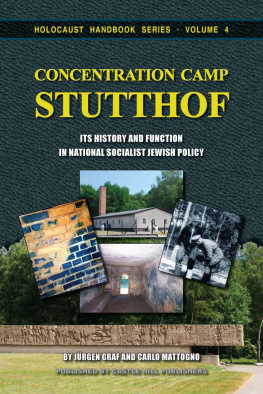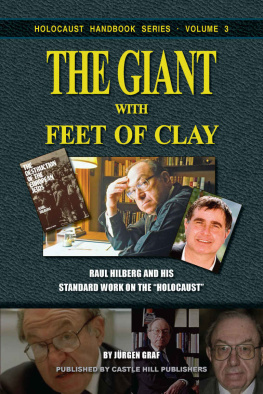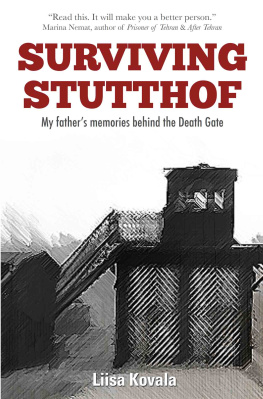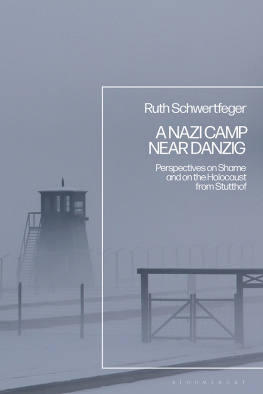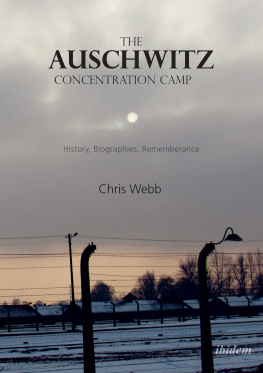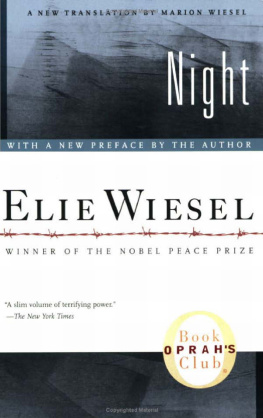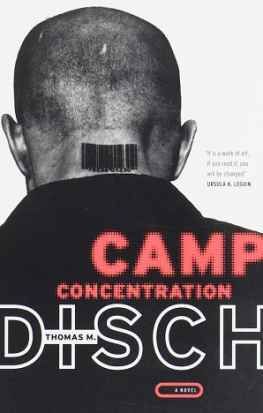Concentration Camp Stutthof
Concentration Camp
Stutthof
Its History & Function
in
National Socialist
Jewish Policy
Jrgen Graf and Carlo Mattogno

Castle Hill Publishers P.O. Box 243, Uckfield, TN22 9AW, UK 3rd edition, January 2015 |
HOLOCAUST HANDBOOKS, vol. 4:
Jrgen Graf, Carlo Mattogno:
Concentration Camp Stutthof:
Its History and Function in National Socialist Jewish Policy.
Uckfield, East Sussex: Castle Hill Publishers
PO Box 243, Uckfield, TN22 9AW, UK
January 2015
ISBN10: 1-59148-080-9
ISBN13: 978-1-59148-080-8
ISSN 1529-7748
Published by Castle Hill Publishers
Manufactured in the United States of America and in the UK
2015 by Castle Hill Publishers
Distribution: Castle Hill Publishers,
PO Box 243
Uckfield, TN22 9AW, UK
Distribution USA: TBR Books,
The Barnes Review
P.O. Box 15877
Washington, D.C. 20003, USA
1-877-773-9077
Set in Times New Roman
Cover Illustrations:
Front: top: the Stutthof crematorium, rebuilt after the war; right: on the roof of the delousing chamber at Stutthof; Soviet photograph taken in 1945 (see photo 12 in the Appendix); bottom: inside view of the Stutthof Zyklon B delousing chamber; left: detail of the blue discoloration on the outside wall of the Stutthof delousing chamber.
Background: the Stutthof memorial.
Table of Contents
Page
Introduction
. Stutthof Concentration Camp
. Stutthof in Polish and Western European Historiography
. The Objective of the Present Study
CHAPTER I: An Overview of the History of Stutthof Camp
. The Period from September 1939 to February 1942
. The Period from March 1942 to June 1944
. The Period from June 1944 to January 1945
. Evacuation and the End
CHAPTER II: Stutthof as Extermination Camp : The Orthodox Version
CHAPTER III: Stutthof as an Extermination Camp : Critical Investigation of the Sources
. Preliminary Remarks
. Indirect Extermination: Mistreatment , Torture, and Deliberate Propagation of Disease
. Direct Extermination by Means Other than Gassing
a ) Executions
b ) Euthanasia by Injection
c ) The Infirmary as Extermination Factory
d ) Estimated Total Number of Victims
. The Gassing of Human Beings
a ) Stutthof as Auxiliary Extermination Camp of Auschwitz
b ) The Stutthof Gas Chamber: Structure and Method of Functioning
c ) The Crematorium
d ) The Time and Number of Victims of the Alleged Mass Gassings According to Various Sources
e ) Sources for Alleged Homicidal Mass Gassings
I ) The Gas Chamber
II ) The Alleged Use of Railway Carriages for Homicidal Gassings
f ) The Alleged Mass Gassing of Disabled Soviet Prisoners of War: Analysis of a Particular Case
. The Death Rate in Stutthof from 1939 to 1945
a ) The Documents
b) The Death Tally
c ) The Number of Jews Who Died at Stutthof Between July 1944 and January 1945
d ) The Orthodox Image of Stutthof in View of the Mortality Statistics
CHAPTER IV: Stutthofs New Role as of 1944
. Deportations of Jews to Stutthof in 1944
. The Reasons for the Deportations
3. The Deportation of Hungarian Jews to Stutthof in 1944
. The Transfer of Unfit Jews from Stutthof to Auschwitz
Conclusion
Appendix
Photos & Documents
Abbreviations
Bibliography
Index of Names
Introduction
1. Stutthof Concentration Camp
On 2 September 1939 the day after the beginning of the German military campaign against Poland an internment camp for Polish detainees was opened in the village of Stutthof, 36 km east of the old German city Danzig in West Prussia (see map). Early in 1942, the status of the camp was changed from that of an internment camp to Stutthof concentration camp. Prisoners were sent to Stutthof from many different countries throughout the sixty-eight months of its existence; these prisoners included a number of Soviet prisoners of war.

|
Dark gray: German territory after WWI. Light gray: German territory annexed by Poland after WWI.
The area of Danzig (dashed line) was formally ruled by the League of Nations. The village Stutthof (West Prussia) is located at the Frisches Haff , a fresh water lake separated from the Baltic Sea by a slender peninsula ( Frische Nehrung ). The entire German territory shown here was annexed by Poland after WWII, its almost entirely German population either killed or expelled. |
In 1944, what had previously been a relatively small camp population suddenly exploded, largely due to mass transports of Jewish inmates from the Baltic countries, Hungary, and Poland by way of Auschwitz. Prior to that time, there had been relatively few Jews in the camp. Stutthof was evacuated in January 1945, and was captured by the Soviet Army on 9 May 1945. The last remaining National Socialist concentration camp, it held only about 150 inmates at that time, all the others having been evacuated.
2. Stutthof in Polish and Western European Historiography
Literature on Stutthof that is of any scientific value exists only in Poland. We will return to this Polish literature repeatedly in the present text, but, at this point, we draw the attention of the reader to the fact that this literature is heavily influenced by propaganda and is quite unreliable on decisive points.
The anthology Stutthof hitlerowksi obz koncentracyjny The Stutthof Memorial Site also publishes a periodical bearing the title Stutthof. Zeszyty Muzeum ( Stutthof. Paper of the Museum , hereafter referred to as SZM). The periodical is only concerned with events in the camp.
Polish historiography maintains that Stutthof became a makeshift extermination camp for Jews in 1944. A summary of the orthodox version was published in 1967 in the periodical of the Jewish Historical Institute located in Warsaw:
In the spring and summer of 1944, the character of Stutthof changed fundamentally; it was no longer simply a concentration camp, but simultaneously an extermination camp for tens of thousands of Jews, especially Jewish women. [] The victorious offensive of the Soviet Army forced the Hitlerites to evacuate the concentration camp and prisons in the territory of Lithuania, Latvia, and Estonia. In connection with this, various concentration camps such as Riga-Kaiserwald, Kaunas-Prosidniszki, and a few others, were dissolved in 1944. This led to a massive transfer of prisoners of Russian, Belo-Russians, Latvian, and Lithuanian nationality, as well as many thousands of Latvian, and Lithuanian Jews, to Stutthof. Furthermore, the liquidation of Hungarian Jews that was occurring at Auschwitz at that time exceeded the capacity of Auschwitz camp. Thousands of Hungarian Jews were now sent to Stutthof and its subsidiary camps.
According to the Polish historical literature, many mostly Jewish Stutthof inmates were murdered with poison gas beginning in June or July of 1944. This allegation is also contained in several works of western Holocaust literature; namely, the anthology Nationalsozialistische Massenttungen durch Giftgas
And yet there are other historians even those who maintain the reality of a systematic extermination of Jews in the Third Reich who make no claim of any extermination of human beings at Stutthof concentration camp. Raul Hilbergs 1300-page standard work on the Holocaust make any claim of homicidal gassings at Stutthof.

